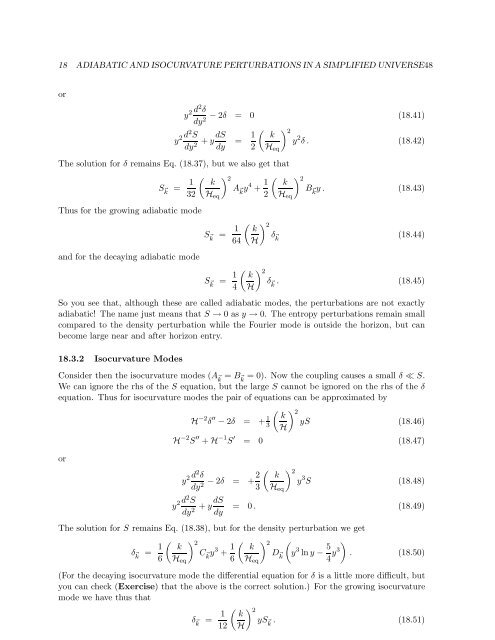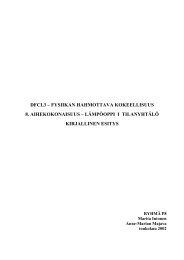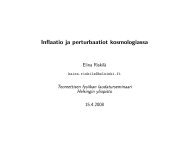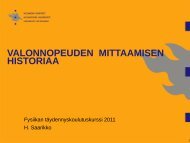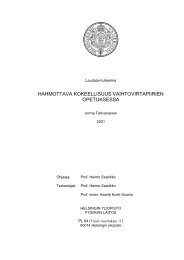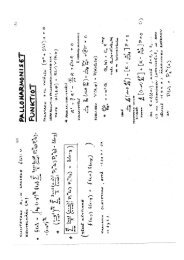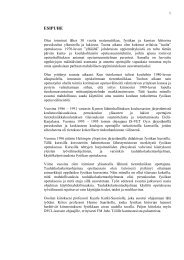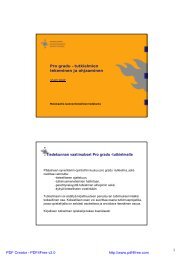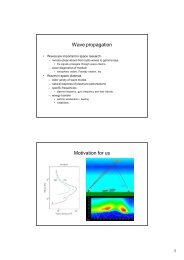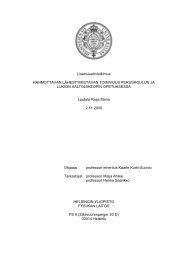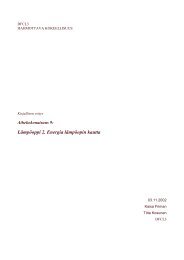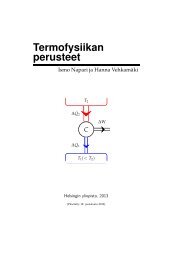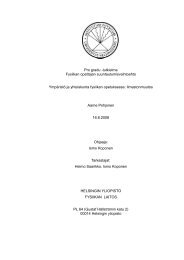Cosmological Perturbation Theory, 26.4.2011 version
Cosmological Perturbation Theory, 26.4.2011 version
Cosmological Perturbation Theory, 26.4.2011 version
You also want an ePaper? Increase the reach of your titles
YUMPU automatically turns print PDFs into web optimized ePapers that Google loves.
18 ADIABATIC AND ISOCURVATURE PERTURBATIONS IN A SIMPLIFIED UNIVERSE48ory 2 d2 δdyy 2d2 Sdy 2 + ydS dy− 2δ = 0 (18.41)2= 1 ( ) k 2y 2 δ . (18.42)2 H eqThe solution for δ remains Eq. (18.37), but we also get thatS ⃗k = 1 ( ) k 2A ⃗k y 4 + 1 ( ) k 2B ⃗k y . (18.43)32 H eq 2 H eqThus for the growing adiabatic modeand for the decaying adiabatic modeS ⃗k = 1 ( ) k 2δ ⃗k (18.44)64 HS ⃗k = 1 4( kH) 2δ ⃗k . (18.45)So you see that, although these are called adiabatic modes, the perturbations are not exactlyadiabatic! The name just means that S → 0 as y → 0. The entropy perturbations remain smallcompared to the density perturbation while the Fourier mode is outside the horizon, but canbecome large near and after horizon entry.18.3.2 Isocurvature ModesConsider then the isocurvature modes (A ⃗k = B ⃗k = 0). Now the coupling causes a small δ ≪ S.We can ignore the rhs of the S equation, but the large S cannot be ignored on the rhs of the δequation. Thus for isocurvature modes the pair of equations can be approximated byorH −2 δ ′′ − 2δ = + 1 3( kH) 2yS (18.46)H −2 S ′′ + H −1 S ′ = 0 (18.47)( )y 2 d2 δk 2dy 2 − 2δ = +2 y 3 S (18.48)3 H eqy 2d2 Sdy 2 + ydS dy= 0. (18.49)The solution for S remains Eq. (18.38), but for the density perturbation we getδ ⃗k = 1 ( ) k 2C ⃗k y 3 + 1 ( ) k 2 (D ⃗k y 3 ln y − 5 )6 H eq 6 H eq 4 y3 . (18.50)(For the decaying isocurvature mode the differential equation for δ is a little more difficult, butyou can check (Exercise) that the above is the correct solution.) For the growing isocurvaturemode we have thus thatδ ⃗k = 1 ( ) k 2yS ⃗k . (18.51)12 H


